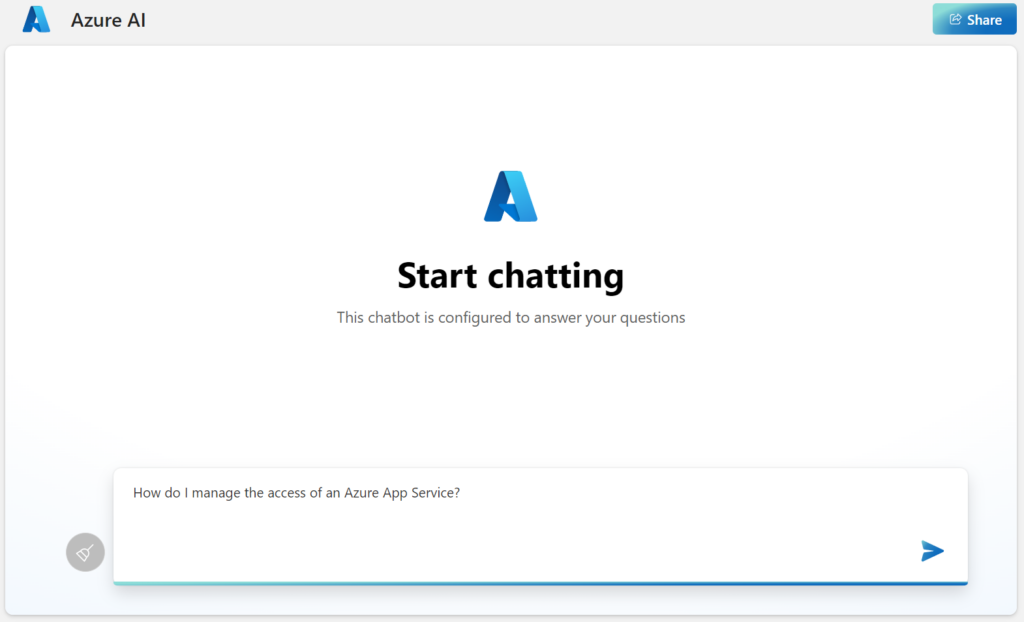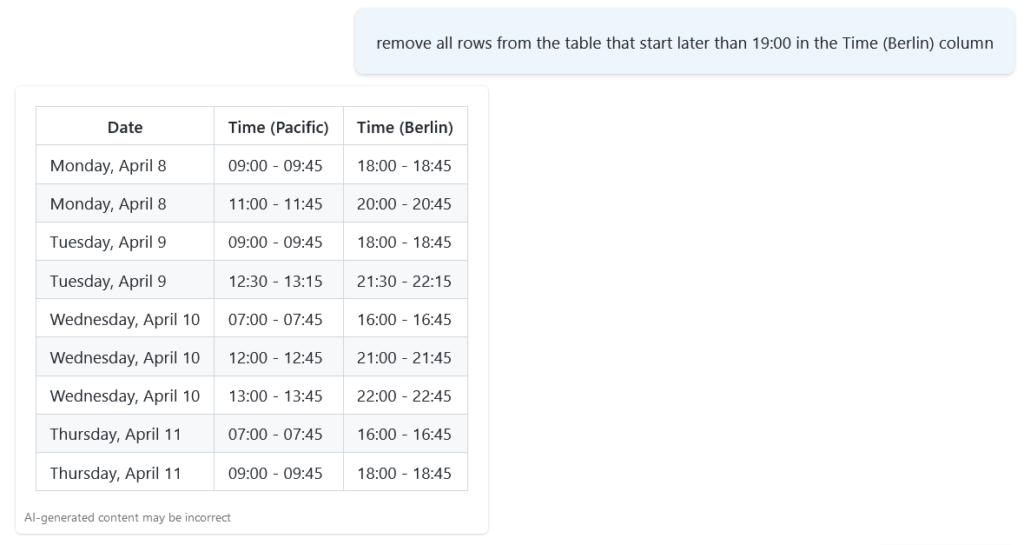
Using GenAI: “AI convert into my Time Zone!”
Do you also struggle with converting time zones into your local time? I do, and most of the time, I use tools to help me with this kind of problem. But did you know that you can treat converting time zones also as a language problem?
Today, I will show you an example of how I use Azure OpenAI to master this challenge for me. I let the AI convert appointment proposals from an email into my own time zone.
Let’s start. Recently, I discovered this table in one of my emails:
To give you some more details, I live in Germany. Therefore, my local time zone is Central European Time (CET), which is UTC/GMT +1 hours. As you see, the times from my email are in Pacific Time Zone (PT).
In detail, the Pacific Time Zone is UTC/GMT -8 hours. In consequence, I must add 9 hours to my local time to get the correct meeting times.
AI convert the time zone for me!
You know, I use Azure OpenAI as chatbot. In detail, I use my Web Application based on my blog post: Using Azure Open AI in Business in Azure.

First, I’ll give my Large Language Model (LLM) the context. I used as prompt this text:
“Please convert the text into a table:
<my copied table>”
Here you see my entered text. Yes, this is not the table that I have received in my email. Therefore, I have instructed Azure OpenAI to convert this text into a table:
Great, my OpenAI chatbot understand my intent and I get this result back:
Now, my conversation contains a table. In addition, this table is a well formatted table. Much better, the LLM can now also recognize it as a table because this is now part of my chat history.
I continue with this prompt to extend the table with another column that displays my local time:
“add another column Berlin time zone to the table”
The result from Azure OpenAI is this:
Finally, I want to change the time format into 24 hours format. Therefore, I use this prompt:
“change the time format into 24 hours format (HH:mm)”
Perfect! The result is exactly what I need to plan the appointment.
Great, now I can select the time slots, which suites well for me.
Shaping the AI Result
On the other hand, maybe this is also a language problem that my AI can solve for me. My new task is this, I want to remove all proposed time slots which are after 19:00 in my time zone (Berlin).
Together with the current history, I use my next prompt in my chatbot:
“remove all rows from the table that start later than 19:00 in the Time (Berlin) column”
The result from my chatbot solution is this:
Ok, this is obviously not correct. This might happen. Never forget this: “AI-generated content may be incorrect”. The reason can be, that my AI oversee something in the given history, or the history contains to many information which are no longer relevant for the new task.
So what can I do? Yes, I propose my AI to review the result:
Again, the answer is better but also not 100% correct. You see from this example, there is still one wrong row in the result.
My reaction as a human is: I see the mistake directly. Moreover, I’m adding another instruction to correct the result:
Now I have my resulting time slots. In the end, this took me less than 1 minute!
Summary
This small example showed us how we can use generative AI in our everyday work. This is because a large language model can solve language problems. Moreover, AI is not limited to common language problems such as “rephrase this text…”, “correct the grammar of…”, or “summarize this…”. No, AI can understand much more when we guide our AI.
Furthermore, my example showed that AI does not always provide correct answers. It is important to note that AI-generated content might be incorrect. Therefore, it is essential for us as humans to review the generated answers. As a result, we can improve the AI output with additional instructions and prompts.
Yes, collaboration is the key to success. Humans and AI are an outstanding combination. Together we can solve totally new problems. Together we are stronger!







